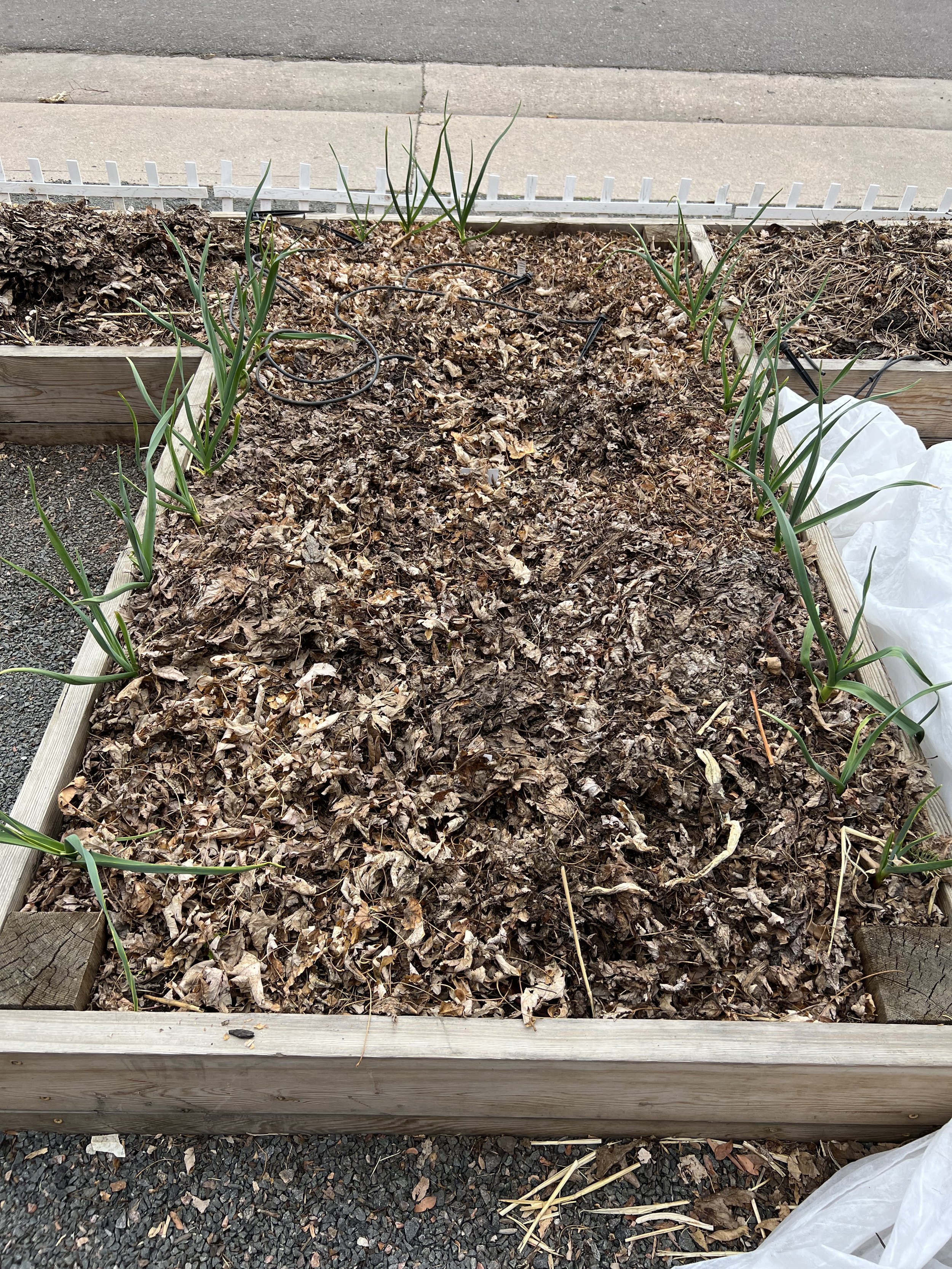Growing Great Garlic: A Comprehensive Guide to Planting, Harvesting, and Storing Garlic
Garlic is a beloved staple in the garden and kitchen, and with just a bit of knowledge and care, it can become one of the most rewarding crops you’ll grow. In this guide, we’ll walk through everything you need to know about growing great garlic, from selecting the right varieties to planting and harvesting. Whether you're a beginner or seasoned gardener, these tips will help you get the most out of your garlic crop.
In this blog, you’ll learn:
Fun Facts About Garlic
Varieties of Garlic We Love
Planting Garlic in Denver, Colorado
Caring for Your Garlic
Harvesting, Storing and Cooking with Garlic
Are we connected on Instagram yet?
Give me a follow: @auntiemsgarden
Fun Facts about garlic you might not know
Growing Garlic in Denver
Before we dive into the details, here are a few fun facts:
Garlic is a hardy perennial but is commonly grown as an annual.
It originated over 6,000 years ago in Central Asia and spread across the "garlic crescent" into Europe and the Middle East.
During WWI and WWII, garlic was even used as a disinfectant!
Silverwhite softneck garlic
Varieties of Garlic
Garlic comes in two main types: hardneck and softneck, each with its unique characteristics.
Hardneck Garlic: Best for colder climates, hardneck varieties produce a flower stalk called a scape, which is also edible. Hardneck garlic typically has 4-6 cloves arranged around a central stalk and a 3-6 month shelf life. Popular cultivars include Rocambole and Purple Stripe.
Softneck Garlic: This variety does not produce a scape, grows more easily in warmer climates, and typically has many smaller cloves. It’s the type most commonly found in grocery stores and is ideal for braiding. Softneck garlic can have a shelf life of up to 10 months, with popular varieties like Artichoke and Silverskin.
Planting Garlic
Garlic needs a cold, dormant period, which is why fall is the perfect time to plant. Here’s how to get started:
Timing: Plant garlic in mid-October, about 6 weeks before the ground freezes. You can also plant in spring, though fall planting produces larger bulbs.
Soil Prep: Make sure the soil is loose and enriched with compost or organic matter. Garlic appreciates a nitrogen boost before planting.
How to Plant: Separate the bulbs into individual cloves and plant them pointy side up, 4-6 inches apart, and 2-4 inches deep. Cover with soil and mulch, then let nature take care of the rest!
Garlic on soil, Planting in Denver, Colorado
garlic in the big garden in Denver
Caring for Garlic
Mulch & Watering: Mulching your garlic beds will help retain moisture and suppress weeds. Be mindful to weed often, and if your garlic sprouts early, don’t worry—it can handle a bit of snow or frost.
Fertilization: In early spring, apply a high-nitrogen fertilizer like fish emulsion to help your garlic thrive. Garlic also benefits from occasional foliar feeding.
Watch for Bolting: While hardneck garlic produces scapes, softneck garlic may "bolt" from stress. If this happens, clip the flower stalks to refocus the plant's energy on growing larger bulbs.
garlic harvest spade in Denver, Colorado
Harvesting & Storing Garlic
Garlic is typically ready for harvest in mid-July when the lower leaves begin to turn brown but the upper leaves are still green. Here’s how to harvest and store your garlic for optimal use:
Scape Harvesting: If growing hardneck garlic, you’ll want to harvest the scapes once they’ve made a full circle. Snap them off at the base and enjoy them in pestos or as an addition to stir-fries.
Bulb Harvesting: Stop watering about a week before harvesting to allow the bulbs to dry out slightly. Gently pull the bulbs out of the soil, taking care not to damage them. Avoid leaving them in the sun for too long—garlic prefers a cool, well-ventilated space for curing.
Curing: Lay garlic flat or hang it in bunches in a dry, cool place for 2-4 weeks. Once cured, trim the stalks and roots and brush off any remaining dirt. Store in a cool, dry location, and check regularly for any damaged bulbs.
Cooking with Garlic
Garlic is not only a gardening favorite but a kitchen staple! Here are some ideas for making the most of your garlic harvest:
Garlic Greens: When your garlic is about 12 inches tall, you can start harvesting the greens. They add a mild garlic flavor to stir-fries, salads, and soups.
Green Garlic: Harvest bulbs early for a mild, fresh garlic flavor, perfect for grilling or sautéing.
Garlic Scapes: Use these in garlic scape butter, pesto, or toss them on the grill for a delicious side dish.
Dehydrated Garlic: Preserve your harvest by dehydrating cloves. Grind them into garlic powder for a long-lasting pantry staple.
Read Next: Eat what you grow…Garlic Scapes
Growing great garlic takes some patience, but the results are well worth the wait. Whether you’re harvesting garlic scapes in spring or enjoying roasted garlic bulbs in winter, following these tips will set you up for success. So get planting this fall, and let the garlic-growing adventure begin!
Have questions or want to share your gardening success stories?
Drop a comment below, or reach out through our Contact Page!
Check out our free resources or services!
Save this Blog on Pinterest!
**This post may contain affiliate links, which means I earn a small profit if you click on the link to make a purchase. Other links are not sponsored, because I also like supporting small, local businesses.**
Meet the Gardener
I’m Elisa Mack - a mom and Denverite who went from being a green-ish thumb to a kitchen garden fanatic simply by dedicating myself to the study of all things Colorado gardening.
Landscapers don’t design. And nurseries don’t make house calls.
We take a more full-service approach, from designing your dream garden to keeping it beautiful year-round.
And as your coach, I’ll help eliminate the guesswork through every season, no matter your level of knowledge.














